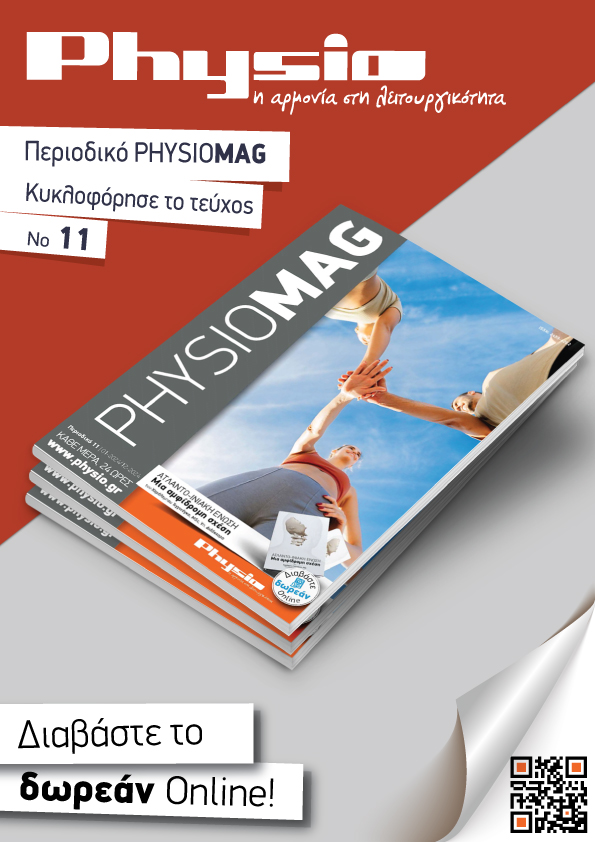Dr. John Upledger
Dr. John Upledger is an Osteopathic Physician, Clinical Reseacher and developer of two innovative forms of bodywork, CranioSacral Therapy and SomatoEmotional Release. He is a respected educator and author of the excellent and informative book Your Inner Physician and You. Dennis Hughes: For our readers that are unfamiliar with your work, can you give an introductory description of CranioSacral Therapy?
An Interview with Dr. John Upledger, D.O., O.M.M.
Creator of CranioSacral Therapy and SomatoEmotional Release
By Dennis Hughes, Share Guide Publishe

Dr. John Upledger is an Osteopathic Physician, Clinical Reseacher and developer of two innovative forms of bodywork, CranioSacral Therapy and SomatoEmotional Release. He is a respected educator and author of the excellent and informative book Your Inner Physician and You.
Dennis Hughes: For our readers that are unfamiliar with your work, can you give an introductory description of CranioSacral Therapy?
Dr. John Upledger: CranioSacral Therapy is a very soft touch, hands-on method of treatment. It deals with what we have named the craniosacral system which is composed of a membrane that is waterproof that encases the brain and spinal cord and carries within it cerebrospinal fluid. The pressure and volume of the fluid go up and down. That makes it a hydraulic system, which needs to be free to move all the time because the fluid should be moving and bringing nutrients to all the neurons and taking away wastes and so forth. With CranioSacral Therapy, we have several entrees into this system&emdash; most of them through bony attachments or through direction of energy or pulling of fascia&emdash;for alleviating any restrictions that might have accumulated due to injuries or illnesses. This therapy improves the health of the brain and spinal cord, which in turn, affects the whole body.
Dennis: Aren't there three layers of membrane?
Dr. John: Yes. The outer layer is called the dura mater and it's the waterproof one. It's kind of tough. It has some elasticity, but not a lot. The middle layer is called the arachnoid membrane and it carries a lot of blood vessels. It interacts between the external dura mater, the outer layer and the internal layer which is called the pia mater, which is the one that follows all the little dents and nooks and crannies in the brain. You probably have seen pictures of the surface of the brain and the pia mater follows all those little dents into the brain.
Dennis: So the pia mater is on the inside of the skull?
Dr. John: They are all inside the cranial wall, all three of them.
Dennis: All three membranes extend from the head down through the spine to the sacrum, right?
Dr. John: That is correct. Part of what's needed for good health and good movement is the three layers need to be able to move independently of each other. If they were stuck together and couldn't glide, you wouldn't be able to bend side to side or forward and backward because you wouldn't have that play in there.
Dennis: So if you do some gentle, regular exercise like swimming, Tai Chi or yoga, that would be good to extend flexibility into later life.
Dr. John: It's quite helpful, yes. The more you get these membranes mobilized, the healthier you'll be. And of course, that extends through your whole body, ultimately, via the nervous system.
Dennis: The innermost membrane, the pia mater, attaches to the spinal cord?
Dr. John: Yes. It adheres to the spinal cord going down, and the only place it attaches to bone is where the nerve roots of the spinal cord come out laterally or transversely. Then they attach to openings between the vertebrae, but they're not in the spinal canal, they are out there, maybe a half inch or an inch.
Dennis: The outermost layer, what does it attach to, or is it flowing freely?
Dr. John: The outermost layer sometimes is free and sometimes attached. Inside the skull itself, it divides into two layers. One layer becomes the internal lining of the skull wall. Then there are little fibers that attach the second layer to it. The inner layer of it has much more mobility. The fiber is restricted somewhat, but not a lot. It glides back and forth a little bit. It's because of this attachment to the bones that we can actually use skull bones to move the membranes and put forces in there that create release of certain restrictions or adhesions that may have occurred.
Dennis: I read in your book, Your Inner Physician and You, that bone actually grows out of the membrane when you are in the womb.
Dr. John: When you are an embryo the surface of the skull itself was all membrane and the bones formed within it. When you are born that is why you have these fontanels, the soft spots. Those bones haven't grown to fill in the soft spots yet. Actually, at the sutures where bones come together, you might have a gap of an eighth of an inch or even a quarter of an inch wide when you are first born. This is because when you are delivered your head has to deform coming through the birth canal. So one of your skull bones will override the other in order to make the head narrower to get through narrow places.
Dennis: After you're born your head gradually becomes rounder?
Dr. John: That's exactly where CranioSacral Therapy could start. Heads are supposed to expand and become rounder, as you said, and sometimes they don't. They get stuck, and at a time like that, a good therapist can release that stuck place between two bones where it didn't fully expand in the space of a few minutes. You can take away a lifetime of trouble for that child right at that point.
Dennis: When we are adults, it's commonly thought that those different plates of the skull fuse together, which is a myth that you explode in your book. Can you talk a little bit about how we can retain some flexibility in those bones even as an adult?
Dr. John: First of all I would like to clarify this point. British anatomy taught that the bones were fused as you became an adult. Italian anatomy did not. I think that is because British anatomy studied embalmed cadavers. They had been sitting in a laboratory, they had been embalmed, and because of post mortem and chemical changes that occurred, these sutures appeared to be calcified. Italian anatomists worked on fresh cadavers, and they could see that there is a lot of elastic tissue, a lot of blood vessels, and a whole lot of things that are there so that the bones can move, one in relationship to the other.
I didn't know about this difference (between the British and Italians) until I was lecturing in Israel and I was making a strong point before a bunch of doctors about how this systems works and how these bones are not immovable in adults, they are not fused, and nobody really seemed to be really excited about that. Finally after I tried to reiterate it the second time in different terms, because I thought they didn't understand me, one of the doctors said, "Let me show you something." He pulled out an Italian anatomy book published in 1920. He translated it for me from the Italian, "The bones of the skull do not fuse except under diseased conditions throughout life." So we have that myth in this country because we have studied and drawn our education from British anatomy. We just reinvented the wheel!
Dennis: So this is old school for some Europeans.
Dr. John: Yes. There are a couple of very important points: bone motion needs to continue throughout life, and the slight motion that is there is accommodated because the sutures themselves have elastic and collagen fibers in them so that they allow for some movement (on the order of a millimeter or perhaps a millimeter and a half in some cases). If you look at the formation of the sutures, you can see which way the bones move in relationship to each other. It took us a while to make this discovery&emdash;or rediscovery I should say.
At first we just studied the cadavers in the anatomy lab, and it looked like the bones were fused together. But I have a friend who is a neurosurgeon&emdash;he would take bone samples across sutures from living people that he was operating on. He'd take a very thin slice, quick freeze it, and overnight it to us in Michigan. And we learned to study these things with different kinds of stains. There was no chemical invasion here at all, no phenol or formaldehyde or anything. We saw the structure of the suture was very capable of movement. Then we measured it on monkeys, and it moved very well on monkeys. Then we found out it was a singular hydraulic system. I would put just a little pressure on the tailbone of the monkey and I could stop the motion of the skullbones. I would do this because of the connection and the hydraulic force that I was able to exert, increasing the hydraulic pressure just a little bit.
Dennis: So sometimes you will work on one area of the body that will actually be treating a problem on another part of the body?
Dr. John: Yes. That's probably going on at least 75% of the time in good CranioSacral Therapy.
Dennis: That reminds me of chiropractic, being that the spine is from the top to the bottom of your torso, and the nerves affect the whole body.
Dr. John: Sure, they do. I am an osteopath, so obviously I've learned spinal manipulation too, and we have a lot in common with chiropractic in that aspect of our education. I don't think there's much argument about that. What I like about the sutural movement is that if the suture does not move, we know there is something wrong. Then we do things to make it start moving. In cranial work, you don't have to work hard, you don't do any thrusting or any sudden pushing. You just resist a movement in the place where it's moving hard, where it has the most motion. Then the hydraulic portion in the inside will open up that stuck suture for you.
Dennis: In your book you state that you use no more than the pressure of a nickel.
Dr. John: That's right. Five grams is what we teach.
Dennis: Then you hold that for a period of time?
Dr. John: Yes. You see, this is a pumping action. The volume of the fluid is going up and down about ten times a minute inside the skull. Cerebrospinal fluid volume&emdash;there's the pressure. In any hydraulic system, if you push in one place, the force you use is being broadcast throughout all of the fluid.
Dennis: The heart is pumping your blood, and I understand that there's a rhythm to the spinal fluid, but I sort of saw it as static, like a brake system. What's making it move?
Dr. John: I'll come to that in a minute. What I was pointing out is that you can use the rise and fall of fluid pressure, and I'll get to how that happens. There's a suture that goes across the top of your head like a pair of earphones would come together. That's the coronal suture. Let's say that it's stuck because your forehead has been jammed backwards because you fell down and you banged your forehead. You jammed that suture together. Now the compensation to allow for the rise and fall of fluid volume inside may be taken up in a suture that runs up along the back of your head from side to side. Now I examine it and find that the two bones, the frontal and the parietal bone, (where you got jammed) are not moving, and the compensation is happening in the suture which is a couple of inches behind that. So if I put my hand on the back one and hold it together with just a little bit of pressure, and then let that pumping action of fluid on the inside work on the suture that's stuck, it will gradually begin to open that suture.
That's how this works, we are taking the compensation away in one place, reducing it, and that causes the hydraulic force to go to the other place. If you really know how this works and you understand the anatomy, you get so you can direct force all over the place. Now, you want to know what causes the pumping action to occur, am I right?
Dennis: That's the question I have.
Dr. John: What we found out first of all is that the sutures spread and close, as I said, in about ten cycles per minute. Now in the saggital suture, which is the suture that separates the two halves of your skull (it runs front to back down the midline and it starts about four inches above your eyes), there are nerve receptors that stretch and broadcast the stretch. They also have compression receptors so that when the two bones come together and press enough another signal is sent. The signals go down a nerve trunk we discovered that runs down through that membrane system which separates your brain into right and left parts. It goes into the ventricles of the brain and gives a signal down there. In the ventricle system of the brain is what is called the choroid plexus and that plexus extracts fluid from blood. In other words, it uses osmotic pressure and some active extraction, but blood flows through capillaries on one side of this system and it extracts just the fluid and leaves the cells, so it takes kind of a blood plasma out. Actually, it's a little more selective than that. It doesn't allow all of the ions to pass through. That is the manufacture of cerebrospinal fluid.
Dennis: So cerebrospinal fluid is made from blood.
Dr. John: Correct. It's made from the blood. It is made from the blood at a certain speed. Let's call it "speed 2x." Now there's a constant reabsorption going on of the cerebrospinal fluid back into the bloodstream at the rate of 1x. The reabsorption stuff is located in most of the venous channels in the skull itself. The reabsorption system is called the arachnoid system. The arachnoid reabsorbs the cerebrospinal fluid and puts it back into the blood. Blood comes into the skull, some of the fluid is extracted from it, and it becomes cerebrospinal fluid. At the same time, some of that fluid is being reabsorbed. It's only reabsorbed at "speed 1x," half as fast as it's produced.
Dennis: Different rate of motion, twice the speed.
Dr. John: Yes. Obviously the volume increases, and when it does the suture I talked about on the top of your head is expanding. It has stretch receptors up there. When it stretches to a certain point it sends a signal down that says stop making fluid and then it stops. Reabsorption continues. As the reabsorption then brings the fluid volume down again, the suture begins to close. When it hits the compression receptors, the message goes down to turn the production back on. What we found is the production is on for about three seconds and off for about three seconds in a normal situation, which gives you about a six-second cycle.
Dennis: That's caused by a pulse in the nervous system?
Dr. John: No, not a pulse in the nervous system. It's caused by the literal physical pressure in the suture either compressing or stretching. The switches that turn on and off control the production turning on and off, and that's what causes the motion to occur.
Dennis: Which is at ten cycles per minute?
Dr. John: Ten or twelve. It varies a little bit from person to person.
Dennis: I thought it was very fascinating, when you mentioned early in your book, Your Inner Physician and You, your discovery of this system. I forget the name of the gentleman that you were working on.
Dr. John: Delbert Smith, I owe my whole career to him, I guess!
Dennis: You found something calcified, a coin-sized shape on the outside of his membrane, and you noticed that it had a rhythmic pulse which was different than the breathing machine or the heart rate machine. I thought that was very fascinating&emdash;it had a rhythm but it wasn't related to the other two!
Dr. John: At this particular juncture I could visualize the rhythm of the other two systems and this was different. It stuck in my mind because I could not hold this membrane still for the surgeon to scrape the tumor off. He was pretty upset with me. But he turned out to be the same surgeon that sent us the skull bone samples so that we could prove that sutures could move.
Dennis: So this is a system in the body that's obviously always been there but no one was really aware of?
Dr. John: That's about right. Cranial osteopaths knew about skull bones moving, but they didn't understand this system. I saw this thing in my patient, and I knew that there was something different that I didn't know anything about, and nobody else in the operating room knew anything about it either. Then along comes a piece of literature from the Cranial Osteopathy Academy. When I was in school they were considered kind of offbeat quack types. Most of the people in our college wanted them to hide because they were considered an embarrassment. Everybody knew skull bones didn't move (as far as the school was concerned), but these guys were getting some clinical results: they didn't know why the skull bones were moving, but they knew they were moving. I had the opportunity to see what was making them move during surgery. Most of the guys that did Cranial Osteopathy never did much surgery. Most of them were a bit more elderly, and osteopaths until the 1940's weren't doing much surgery.
So what happened was, I took a position they had offered me at Michigan State to research several things. I researched Kirlian photography, acupuncture and Cranial Osteopathy. We came up with how this whole thing works and actually the Cranial Academy didn't like the idea because it was like heresy against the mainstream of their organization. My job was to put a scientific basis underneath it and either prove it or disprove it. That's what our dean wanted me to do. I proved it was there, but it was different from what they thought it was. So, we did discover this system as it is, and we called it the craniosacral system.
Dennis: It's also worth mentioning here for our readers that you began in private practice, but you did spend nearly a decade as a clinical researcher and professor of biomechanics at Michigan State University. After that you founded your institute?
Dr. John: Well, I was in private practice for almost twelve years in Clearwater Beach, Florida before I was in Michigan. This is where I saw Delbert Smith. Then I went up to Michigan State in 1975. They offered me this job as a clinician/researcher and I accepted it and was up there for over 8 years. Later on I was teaching at the Metiger Foundation in Topeka, and one of the people from Unity Church heard me there and asked me would I like to start a model holistic health center there for Unity Churches. So I took that job for three years. Then we started our own institute after that, in 1985 in Palm Beach Gardens, Florida.
Dennis: In CranioSacral Therapy, how are evaluation and treatment carried out?
Dr. John: Our treatment is all done hands-on, and our evaluation is all done hands-on. There's an example I can talk about where the patient doesn't have any problem with sharing. Perhaps you remember an Olympic diver, Mary Ellen Clark. She won the bronze medal on the high platform in Atlanta. Mary Ellen was suffering from vertigo (dizziness), which is common to high divers. She had been all over the country. She came to see me in September in hopes that she could make a comeback. She had to lay off diving for about four months prior to that. So I evaluated her and I'm looking for stuck places in the craniosacral rhythm or the way it broadcast through the body. Her problem is dizziness, so she's been treated by all kinds of ear, nose and throat specialists and other doctors, but nothing worked. She couldn't dive. So I scanned her body as we would do in a craniosacral examination. What I found out was a lot of the problem was coming from the lower end down at the sacrum and up the dural tube (of that tube of membrane) into the head and then restricting the right temporal bone. This in turn was causing her to get dizzy, because your balance mechanisms are located in the temporal bone. The normal mobility of 10-12 cycles per minute motion was restricted in that temporal bone. Now, it wouldn't do any good to move the temporal bone if you don't get the reason why it's stuck. That came from down in her lower back. Tracing from her lower back what I wound up with is she had an old injury in her left knee that was coming muscle-wise and fascia-wise up into her low back, restricting her sacrum. That was compromising the activity of her craniosacral system, which in turn was screwing up her temporal bone and making her dizzy. I got her knee fixed and then everything else was a piece of cake, and she was back to diving again. And then she won the bronze medal at the Olympics.
Dennis: That's excellent! How does this relate to "tissue memory" and what you call the "energy cyst?"
Dr. John: When I was at Michigan State I did a lot of work with physicists, biophysicists particularly. While I was working there, one of the things we did was we had Wednesday morning meetings and we had five clinicians and twenty-two PhD's from a wide variety of scientific backgrounds. We had already gone through the suture movement business and we had the hydraulic system pretty well taken care of. Working with these patients I said, "You know, I feel like there is an energy transference between the patient and myself when I am working with them." Part of that is because you have your hands still on them. You use maybe a little pressure on one finger, and then you move this or that, but your hand stays essentially in the same place, so that the hand/skin contact on a patient (or through the hair) is pretty constant. At the same time, I am doing research with Kirlian photography.
What I was doing was taking Kirlian pictures of my fingers and my patients fingers on the same place before and after every session. I did this for a couple of years. What I noticed was, let's say you came in with severe back pain and I worked on you, the first Kirlian picture you would probably have very weak coronas or defective coronas, which is the name for the broadcast of the energy out. I might have strong ones, but at the end of the session maybe you got strong or full corona and I got more defective. It would look like I lost some energy to you. Now the question becomes&emdash;and I threw this at the physicists&emdash;can we measure that kind of energy transference? For a week or two the physicists ignored this question, and then I kind of insulted them and told them if they knew what they were doing, they would be able to answer this. This guy Carney got real angry with me and said he would come work with me to prove I was an idiot.
Anyhow, he started watching me with all of the patients. He was there all the time. "What did you do that for, why'd you do this, why'd you do that?" Ultimately, we wound up studying and making recordings of full body electrical potential, tuning out such things as electro-myographic stuff. What we were looking for was the body potential of fluctuations, considering that the body has a bag full of electrolyte conductors and the skin is the insulator that keeps it inside. When I do certain things, just by positional changes or modifying the cranial rhythm by compressing one area that's moving too much, that kind of thing, it would change the electrical potential of the total body as we were measuring way down in the lower limbs. What he taught me to realize was when I found the right position with a patient to reduce the pain or to take that pain away, the electrical potential that he was measuring would drop when I got in exactly the right place. If I kept it there long enough the electrical potential would start to come up a little bit.
He said, "How did you know how to find that place?" It took a lot of introspection, but finally I discovered that when I found exactly the place that took the pain away, the craniosacral rhythm stopped. It stopped at the same time that the body electrical potential would drop. What we discovered here was that there is a change in electrical potential when I find exactly the right position. Now how did I find the position? Well, my answer to that was that I just followed the body's tendency. What we found out over a lot of arduous work was that if I was very skillful and very sensitive, I could find the position. I would go with that body to a position that alleviated the pain. It was the body that was taking me there. Then we found out those were the positions that the injury had occurred in initially. It happened over and over again. These were mostly Worker's Compensation patients, and they were mostly work injuries that I was working with at the time.
Dennis: So the body is telling you the past injuries?
Dr. John: Yes. The patient would say, "Gee, that's exactly the same position I was in when I fell down and hurt my back!" I didn't know that. Carney didn't know that. The patient didn't even know it until he got into the position. So we called that "tissue memory" because the muscles are taking us exactly where we need to go. When we get there, the path of injury is a straight line. In other words, if I fall down on my tailbone on a step, the force of me hitting the step goes into my body in a straight line. But when my body is straight, that line is bent. The energy can't come back out again around a curve or around a 90 degree angle.
When I get the body in exactly the right position, that straight line is once again reestablished, and now the energy can come back out the straight line. We found out when we measured it with thermography that we would get one or two degrees centigrade increase in heat while the body was releasing and at the same time during that period of heat release, the millivoltage was down and flat and I had a stop in the craniosacral rhythm. When the heat started diminishing, the cranio-rhythm started again and the electrical potential came back up&emdash;not usually as high as it was before, but back up to maybe halfway to where it was before. We got a correlation between all three of those things. So I learned lot of physics then. Carney started bringing books home from the library and said, "You learn this, and THEN I can talk to you." I really appreciated it. He was a good teacher.
Anyway, we decided that what's probably going on here is we have a chaotic energy that comes in&emdash;this energy from the blow comes into the body and it's disorganizing. Your body may dissipate it and then you don't have an ongoing injury. If the body can dissipate that foreign energy when it comes in, fine, you'll be all well and the tissues heal in maybe a week or two. It's those injuries that last that are the problem. You fall on your tailbone and you never get better.
Dennis: The deeper injuries?
Dr. John: The injury happened at such a time or such a way that your body was unable to dissipate that foreign energy&emdash;so it concentrates it into the smallest possible ball. When we find the pathway that the ball will exit, then the pain is gone. We call the compression into the ball an "energy cyst." Actually, Elmer Green from Metiger called it that. I was describing it as "entropy" and he said, "You are describing an energy cyst," and that's more correct. The tissues remember how to take you there, and when you get to the right place, it's like the body tissues are saying, "If you'll do this with me, I know how I can get this thing out of here." If you follow the body and do it very sensitively, it will take you to exactly the right position, the energy cyst comes out, and that thing that's been giving you trouble for the last five years is gone.
Dennis: That's remarkable. And you are testing for this with Kirlian photography and other instruments?
Dr. John: Yes. With Carney we did a polygraph reading. It was before big computerized things were available. We used to do a cardiac monitor and a breathing monitor and then a total body electrical potential monitor in both limbs. We had electrodes. I decided arbitrarily to put them about three inches above the kneecaps on each side and then ground each one on the same side at the top of the foot. That way we were as far away from brain electricity and heart electricity as we could get. Carney made a special instrument that would add the negative and positive fluctuations. He tuned out what most electomyographers would term "noise." Carney edited in such a way with his instrument that it turned into a pattern we could read. Then we decided we would study the heat output when we saw this energy was coming out, and the Kirlian photography gave us a general idea of whether the coronas improved or not. Basically whether or not the patient gets better.
Dennis: Very fascinating. One thing that I noticed was that for non-practitioners or lay people to work on one another, you have something called Share Care Workshops. Those are conducted not just at the Institute in Florida, but around the country by different practitioners?
Dr. John: Yes, around the U.S. and Europe, Australia and New Zealand and Japan, too.
Dennis: So that's available for people who want to learn the basics. If they are interested in becoming certified with you, then they come to Florida?
Dr. John: All classes except for our advanced level are taught all over the country, in Europe, Australia, New Zealand and Japan. Our classes up to five levels are taught around the country; sixth level I still hang onto myself and I do teach them.
Dennis: What do you think will happen with the next century of bodywork?
Dr. John: I think that bodywork is going to really thrive and the reason for that is because conventional healthcare is going more and more high tech and more impersonal. I had a patient just the other day that had a virus infection that invaded his brain and they had him in the hospital for four days and nobody came closer than six feet to him. Everything was done by MRI's and all that kind of stuff. No doctor came in and really touched this guy. I think that the human situation is such that we crave communication with someone on a touching level. When someone is a bodyworker, if all they are is well intentioned, and sensitive to the needs of the person they are working on, they can impart a level of self-healing that can't be done with a machine. What I really see happening is a big polarization.
There are some people that are really hooked on machines and high tech stuff, and there are other people migrating towards bodywork because it involves person-to-person contact. Not only because of that, but that's the thing that they really crave. Bodywork will become more educated also. The more you understand the body and the more you work with it, the more you find out that you can facilitate bodily self-healing. There's a lot of people getting damn tired of paying big bucks for all those pills, you know?
Dennis: Bodywork is a good compliment to the existing systems, but I don't think we can throw away the baby with the bath water and get rid of all Western medicine.
Dr. John: No I don't want to do that. I practiced in the days when we did cardiograms and the like, but I went in there and listened to the patients chest with my stethoscope, and at the same time I had my hand on them. Doctors don't often do that anymore, so that's why people are coming to bodyworkers. Bodywork is the vision of health care that gets more and more popular, simply because of the interpersonal relationship if nothing else!
Dennis: Because it's what people crave.
Dr. John: Well, you are born with a necessity of having your mother bond with you and that doesn't stop. When you are 40 you still need somebody to bond with, and if you go to a doctor and you don't even see the guy except through a screen or he sits on the other side of a big desk where he writes prescriptions, that doesn't fulfill your need! If you go to a massage therapist and get a massage or go to the spa plus the massage&emdash;then you feel better. What I'd like to see happening is that doctor behind the desk would learn how to touch again like we did thirty years ago.

Ενότητες
Τελευταία άρθρα
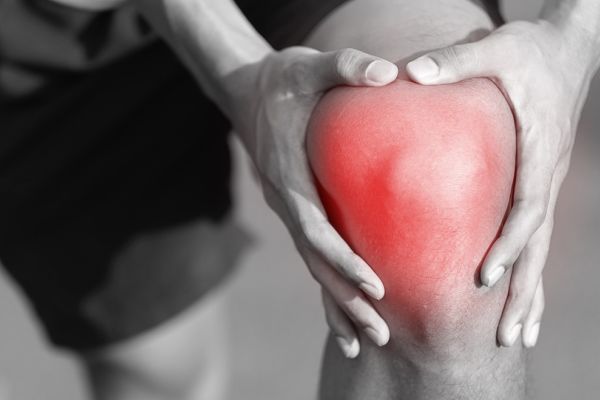
ΕΞΑΡΘΡΩΣΗ ΚΝΗΜΟΠΕΡΟΝΙΑΙΑΣ ΑΡΘΡΩΣΗΣ
Η κνημοπερονιαία εξάρθρωση απαιτεί έγκαιρη διάγνωση και πρόγραμμα εξατομικευμένης αποκατάστασης για την λειτουργική επαναφορά τής άρθρωσης.

STRESS: Η ΣΙΩΠΗΛΗ ΕΠΙΔΗΜΙΑ ΤΗΣ ΕΠΟΧΗΣ ΜΑΣ
Το στρες αναδεικνύεται σε πολύπλευρη απειλή που διαβρώνει υγεία, ισορροπία και ποιότητα ζωής του σύγχρονου ανθρώπου.
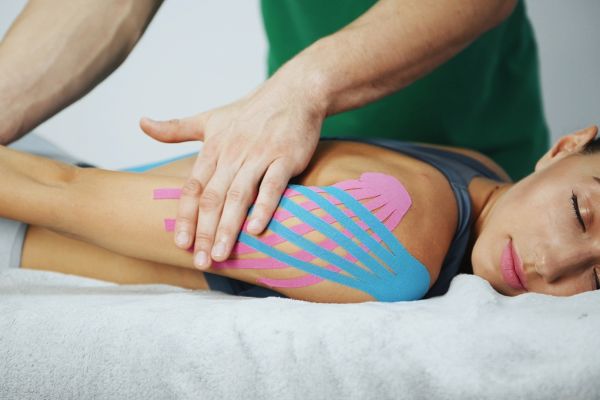
ΑΜΜΕΣΗ ΠΡΟΣΒΑΣΗ ΣΤΗ ΦΥΣΙΚΟΘΕΡΑΠΕΙΑ – ΑΣΦΑΛΕΙΑ, ΑΠΟΤΕΛΕΣΜΑΤΙΚΟΤΗΤΑ ΚΑΙ ΘΕΣΜΙΚΕΣ ΠΡΟΫΠΟΘΕΣΕΙΣ
Η άμεση πρόσβαση στη φυσικοθεραπεία μπορεί να προσφέρει ασφαλή και ιδιαίτερα αποτελεσματική φροντίδα, ενισχύοντας την ποιότητα και την αποδοτικότητα των συστημάτων υγείας, ή εμπεριέχει κινδύνους για τους ασθενείς;
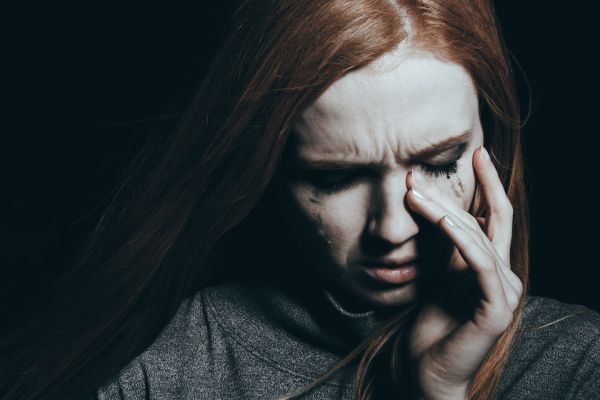
Η ΠΑΓΙΔΑ ΤΗΣ ΑΝΑΚΡΙΒΟΥΣ ΑΝΤΙΛΗΨΗΣ ΤΟΥ ΧΡΟΝΙΟΥ ΠΟΝΟΥ
Ο χρόνιος πόνος δεν αντικατοπτρίζει πάντα βλάβη ιστού, αλλά αφορά μια δυναμική κατάσταση με σύνθετους νευρολογικούς, ψυχολογικούς και κοινωνιολογικούς μηχανισμούς που απαιτούν κατανόηση και ολιστική προσέγγιση.

MANUAL ALIGNMENT THERAPY: ΜΙΑ ΟΛΙΣΤΙΚΗ ΘΕΡΑΠΕΥΤΙΚΗ ΠΡΟΣΕΓΓΙΣΗ
Ολιστική μέθοδος που αποκαθιστά τη σωστή ευθυγράμμιση του σώματος, μειώνοντας τον πόνο και βελτιώνοντας τη λειτουργικότητα μέσω χειροθεραπείας και εξατομικευμένων ασκήσεων.
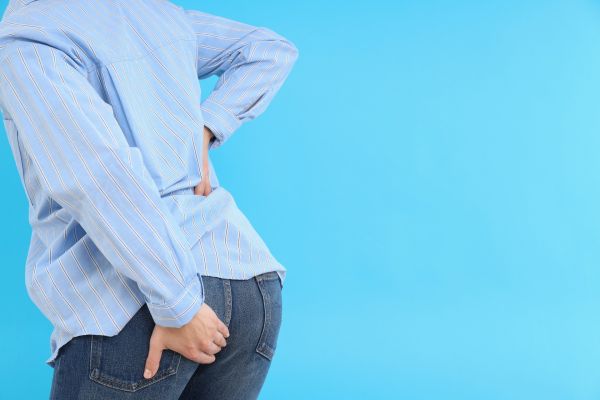
ΙΣΧΙΑΛΓΙΑ: ΣΥΓΧΡΟΝΕΣ ΚΑΤΕΥΘΥΝΤΗΡΙΕΣ ΟΔΗΓΙΕΣ
Η σύγχρονη αντιμετώπιση για την ισχιαλγία δίνει έμφαση στη φυσικοθεραπεία, την ενεργό κινητοποίηση και την εκπαίδευση του ασθενούς για αποτελεσματική αποκατάσταση.

ΑΚΡΑΤΕΙΑ ΜΕΤΑ ΤΟΝ ΤΟΚΕΤΟ
Η ακράτεια μετά τον τοκετό επηρεάζει έως και μία στις τρεις γυναίκες, και συχνά παραμένει αδιάγνωστη λόγω ντροπής ή ελλιπούς ενημέρωσης.
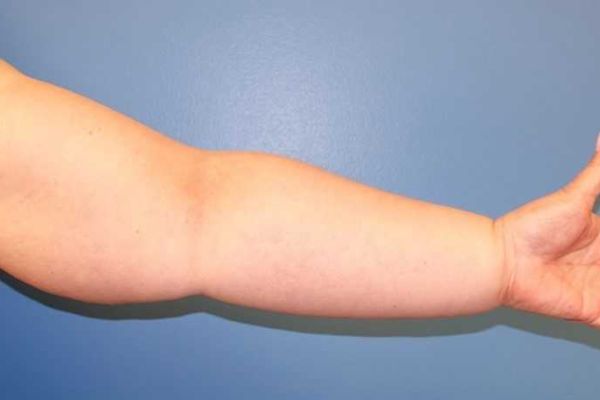
ΘΕΡΑΠΕΙΑ ΤΟΥ ΔΕΥΤΕΡΟΠΑΘΟΥΣ ΛΕΜΦΟΙΔΗΜΑΤΟΣ ΜΕΤΑ ΑΠΟ ΚΑΡΚΙΝΟ ΤΟΥ ΜΑΣΤΟΥ
Το δευτεροπαθές λεμφοίδημα του άνω άκρου αποτελεί μία από τις σημαντικότερες επιπλοκές της θεραπείας του καρκίνου του μαστού, επηρεάζοντας σημαντικά την ποιότητα ζωής των γυναικών.
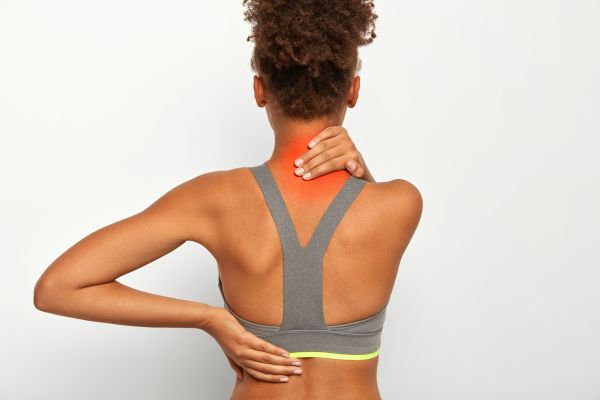
ΑΥΧΕΝΙΚΟΣ ΠΟΝΟΣ
Ο αυχενικός πόνος και το αίσθημα δυσκαμψίας, ή "πιασίματος" στον αυχένα είναι από τις συχνότερες αιτίες αναζήτησης ιατρικής βοήθειας στον σύγχρονο κόσμο.

ΣΥΝΔΡΟΜΟ ΘΩΡΑΚΙΚΗΣ ΕΞΟΔΟΥ: ΑΝΑΣΚΟΠΗΣΗ ΤΗΣ ΣΥΓΧΡΟΝΗΣ ΒΙΒΛΙΟΓΡΑΦΙΑΣ
Το Σύνδρομο Θωρακικής Εξόδου συνιστά μια ετερογενή και αμφιλεγόμενη νοσολογική οντότητα με σημαντικές επιπτώσεις στην καθημερινή λειτουργία και δραστηριότητα του ατόμου.
